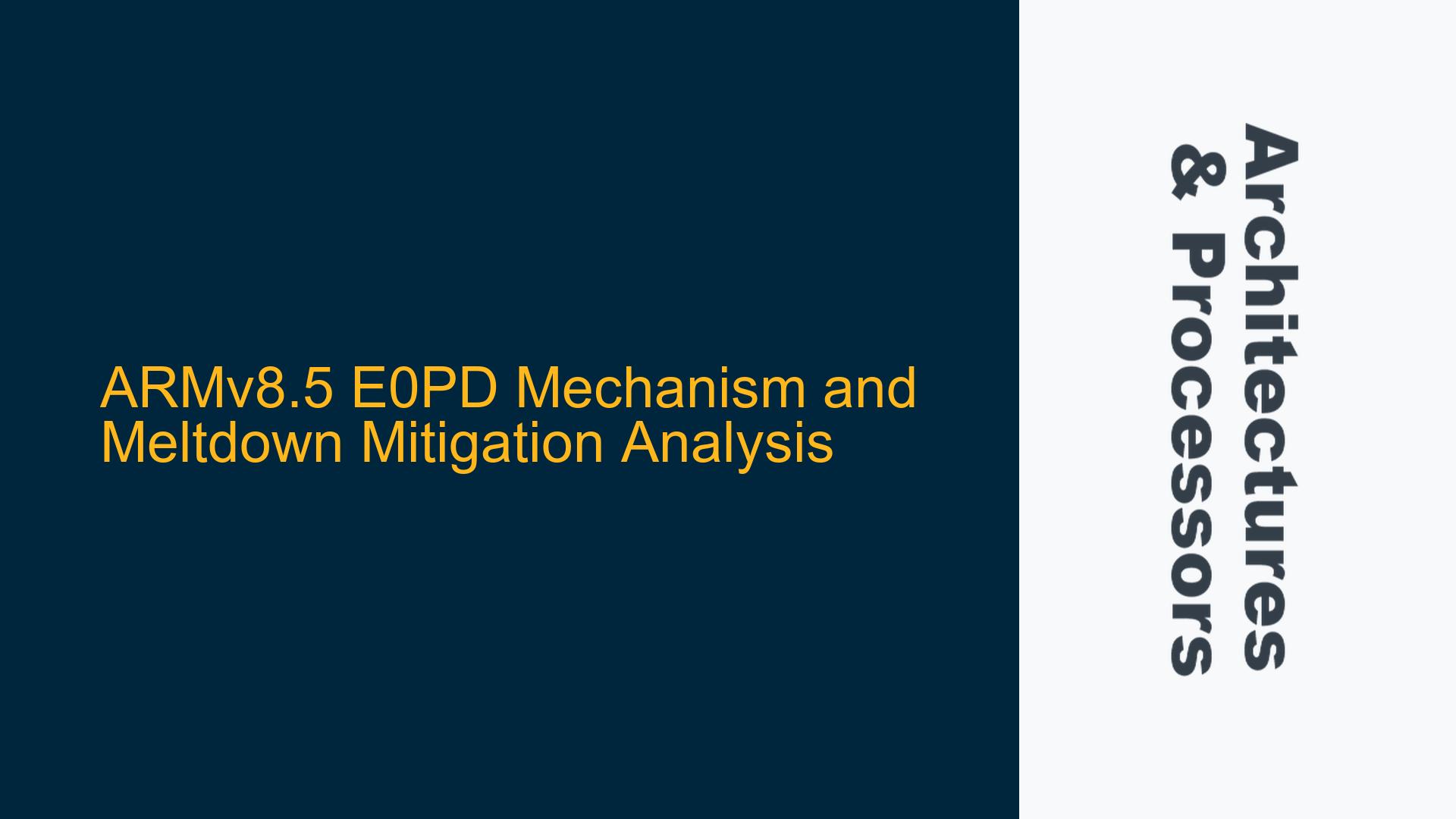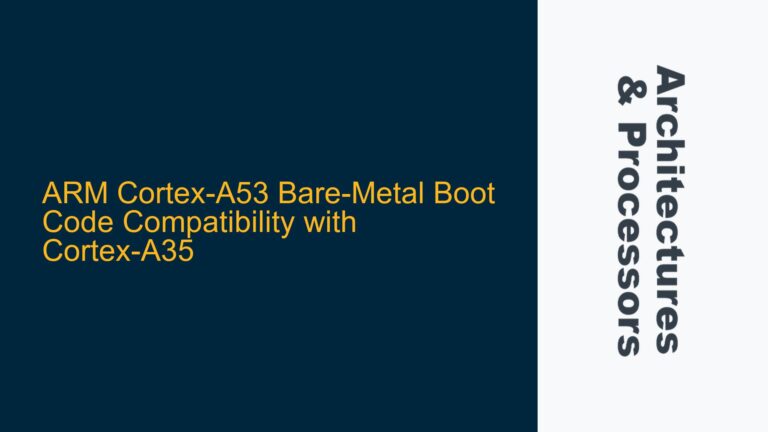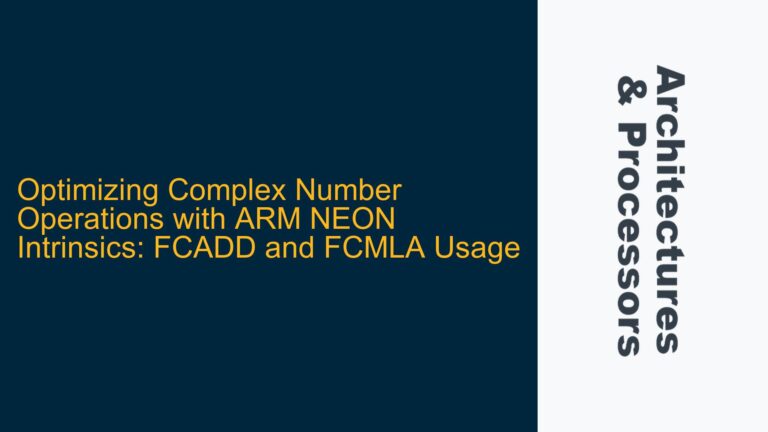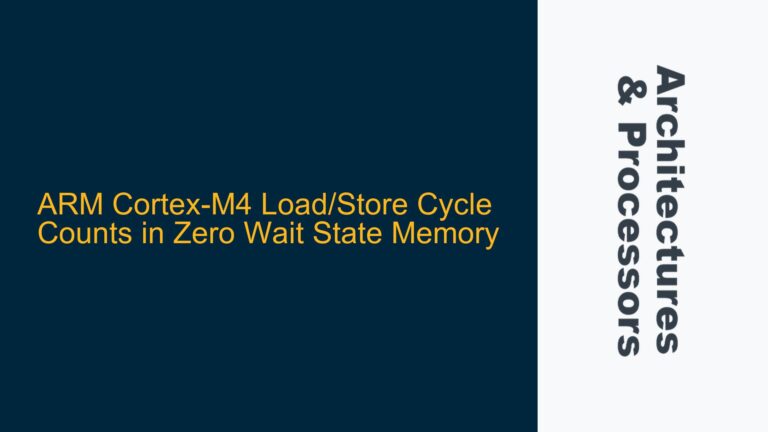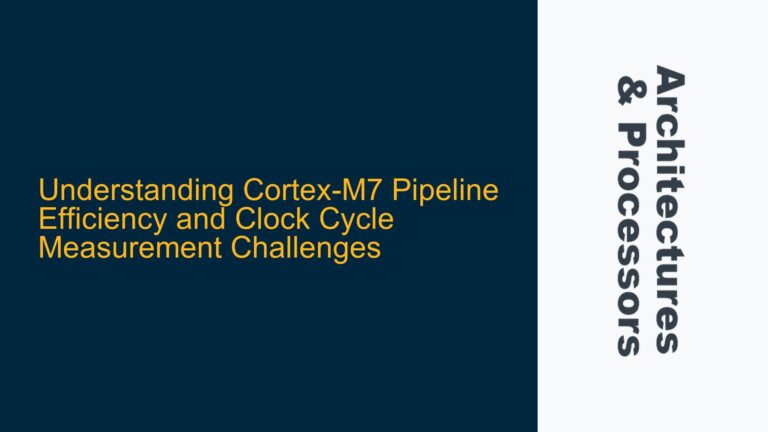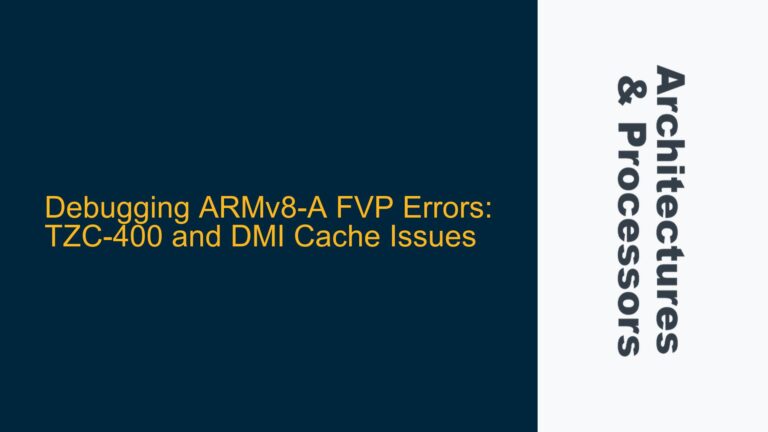ARMv8.5 E0PD Mechanism and Its Role in Meltdown Mitigation
The ARMv8.5 architecture introduces the E0PD (Exception Level 0 Prevention of Data access) mechanism, which is designed to alter the timing of faults in a way that can potentially mitigate certain types of speculative execution attacks, such as Meltdown. The Meltdown attack exploits a vulnerability in modern CPUs that allows a user-space process to read kernel memory, bypassing the usual security boundaries. This is achieved by leveraging speculative execution, a performance optimization feature in modern processors, to access privileged memory and then using timing side channels to extract the data.
The E0PD mechanism works by ensuring that any access from userspace (EL0) to the kernel’s half of the memory map will always result in a fault. Importantly, this fault occurs with a constant timing, which prevents attackers from using timing-based side channels to infer information about the kernel’s memory. This is a significant improvement over traditional mechanisms like Kernel Page Table Isolation (KPTI), which mitigates Meltdown by completely unmapping the kernel’s memory from the userspace page tables when running userspace code. While KPTI is effective, it introduces a performance overhead due to the constant switching of page tables and can be incompatible with certain performance monitoring features like SPE (Statistical Profiling Extension).
The E0PD mechanism, on the other hand, does not require the constant remapping of page tables. Instead, it ensures that any unauthorized access from userspace to kernel memory will fault in a deterministic manner, making it impossible for an attacker to use timing differences to infer kernel memory contents. This approach not only mitigates Meltdown but also maintains compatibility with features like SPE, which are critical for performance profiling and debugging.
However, the effectiveness of E0PD in mitigating Meltdown is not immediately obvious from the ARMv8.5 specification alone. The specification describes the mechanism in terms of fault timing and prevention of unauthorized access, but it does not explicitly state that E0PD is designed to mitigate speculative execution attacks like Meltdown. This has led to some confusion in the community, particularly regarding whether E0PD can fully replace KPTI in all scenarios.
Memory Access Timing and Speculative Execution Vulnerabilities
To understand why E0PD is effective against Meltdown, it is important to delve into the specifics of how Meltdown exploits speculative execution and timing side channels. Meltdown relies on the fact that modern CPUs execute instructions speculatively, meaning they may execute instructions ahead of time, even if those instructions might not be needed. If the speculation is incorrect, the results are discarded, but the speculative execution can leave traces in the CPU’s cache, which can be detected using timing attacks.
In a typical Meltdown attack, a userspace process attempts to access kernel memory. Due to speculative execution, the CPU may temporarily allow this access, even though it is unauthorized. The attacker then uses a timing side channel to determine the contents of the accessed memory by measuring how long it takes to access certain cache lines. By carefully analyzing these timing differences, the attacker can infer the contents of the kernel memory.
The E0PD mechanism mitigates this by ensuring that any access from userspace to kernel memory will always fault, and this fault will occur with a constant timing. This means that even if the CPU speculatively executes the access, the fault will be triggered before the speculative execution can complete, and the timing of the fault will not reveal any information about the kernel memory. This effectively closes the timing side channel that Meltdown relies on.
However, the effectiveness of E0PD depends on the precise implementation of the mechanism in the hardware. If the fault timing is not perfectly constant, or if there are other side channels that can be exploited, E0PD may not fully mitigate Meltdown. This is why the Linux kernel patch that disables KPTI when E0PD is supported includes additional checks to ensure that E0PD is correctly implemented and provides the necessary level of protection.
Implementing E0PD and Ensuring Constant Fault Timing
To fully leverage the E0PD mechanism for Meltdown mitigation, it is crucial to ensure that the fault timing is indeed constant and that there are no other side channels that could be exploited. This requires careful implementation and testing of the E0PD mechanism in both the hardware and the software.
On the hardware side, the CPU must ensure that any access from userspace to kernel memory results in a fault with a constant timing. This means that the fault must be triggered at the same point in the pipeline, regardless of the state of the cache or other microarchitectural components. Any variation in the fault timing could potentially be exploited by an attacker to infer information about the kernel memory.
On the software side, the operating system must be configured to use the E0PD mechanism correctly. This involves setting up the appropriate memory mappings and ensuring that the E0PD feature is enabled. The Linux kernel patch that disables KPTI when E0PD is supported does this by checking for the presence of the E0PD feature and configuring the memory mappings accordingly.
In addition to enabling E0PD, it is also important to ensure that there are no other side channels that could be exploited. This includes checking for other speculative execution vulnerabilities, such as Spectre, and ensuring that they are also mitigated. While E0PD is effective against Meltdown, it does not provide protection against all speculative execution attacks, so additional measures may be required to fully secure the system.
In conclusion, the E0PD mechanism introduced in ARMv8.5 provides an effective way to mitigate Meltdown by ensuring that any access from userspace to kernel memory will fault with a constant timing. This prevents attackers from using timing side channels to infer kernel memory contents, while also maintaining compatibility with performance monitoring features like SPE. However, the effectiveness of E0PD depends on the precise implementation of the mechanism in the hardware and the software, and additional measures may be required to fully secure the system against all speculative execution attacks.
